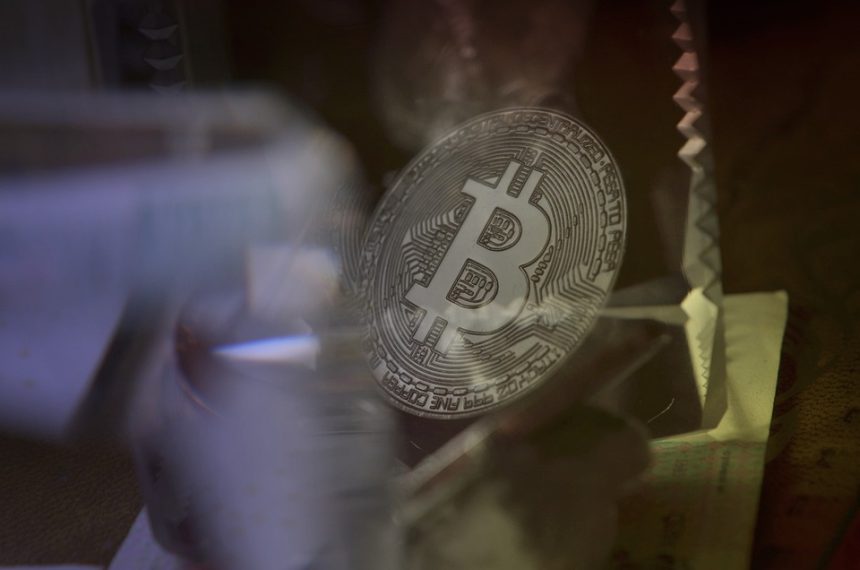Altcoin Market Shifts: How Latest Updates Are Impacting Investor Sentiment
The cryptocurrency market is renowned for its volatility, and the altcoin sector is often a barometer for broader investor sentiment. As we move deeper into 2023, a series of updates—ranging from regulatory interventions to technological advancements—are creating significant shifts in the altcoin landscape. Understanding these changes can provide insight into investor behavior and strategies, highlighting the altcoin market’s evolving nature.
The Regulatory Landscape: A Double-Edged Sword
Regulation remains a double-edged sword for the altcoin market. On one side, clearer guidelines can foster stability and legitimacy; on the other, stringent measures can deter innovation and investment. Recent moves by global regulatory bodies have led to increased scrutiny over altcoins, particularly those perceived as securities. For instance, the U.S. Securities and Exchange Commission (SEC) has ramped up its enforcement efforts against certain altcoins, affecting projects that previously enjoyed a relative safe harbor.
This regulatory pressure has resulted in a cautious approach from investors. While some speculate on the potential gains associated with altcoins that comply with regulations, others are hesitant, fearing that non-compliant projects may face crippling penalties. Consequently, investor sentiment has become polarized. Institutional investors, especially, are gravitating towards altcoins that can demonstrate compliance, while risk-tolerant traders continue to dabble in high-risk, high-reward projects—often with volatile outcomes.
Technological Advancements: Driving Interest and Adoption
Technological innovation continues to be a significant driver of altcoin interest. Projects that offer unique solutions or improvements—such as faster transaction times, enhanced security protocols, or interoperable blockchain networks—can capture the attention of both retail and institutional investors. Notably, the rise of Layer 2 scaling solutions and decentralized finance (DeFi) platforms has breathed new life into the altcoin market.
A prime example is Ethereum’s ongoing transition to Ethereum 2.0, enhancing its scalability and energy efficiency. This upgrade has sparked renewed interest in Ethereum-based altcoins, often referred to as "ERC-20 tokens." Similarly, altcoins focused on decentralized finance (such as Uniswap and Aave) have gained traction due to their potential to disrupt traditional finance, encouraging investors to explore projects that leverage these technologies.
The introduction of new features, such as non-fungible tokens (NFTs) or blockchain-based gaming applications, has also swayed investor sentiment. Enthusiasm for projects with real-world applications or entertainment value has kept the altcoin market dynamic, attracting a diverse range of investors.
Market Sentiment: Fear, FOMO, and FUD
Investor sentiment is inherently driven by psychological factors, often influenced by dominant market narratives. Currently, we see a mix of fear, uncertainty, and doubt (FUD) alongside fear of missing out (FOMO). Anytime the Bitcoin price surges, altcoins often receive a substantial boost; however, negative news corresponding to Bitcoin—such as regulatory issues or significant sell-offs—can lead to a cascade effect impacting altcoin prices negatively.
Social media platforms and online communities like Reddit and Twitter have become critical drivers of market sentiment. Information (and misinformation) spreads rapidly, influencing perceptions about particular altcoins. When prominent influencers advocate for specific projects, a wave of FOMO can sweep through the market, driving prices up rapidly. Conversely, negative news can lead to an immediate drop, spurring panic selling.
The Future of Altcoins: A Cautious Yet Optimistic Outlook
Moving forward, the altcoin market appears poised for both challenges and opportunities. While regulatory scrutiny may constrain some projects, it could also lead to the emergence of robust platforms that prioritize compliance and transparency. Meanwhile, technological advancements are likely to drive continued innovation, with decentralized applications and blockchain interoperability at the forefront.
Investor sentiment will remain fluid, fluctuating in response to external pressures and internal developments within the altcoin sphere. As awareness grows about the potential of altcoins, particularly among mainstream audiences and institutional investors, the sector could undergo a significant transformation.
In conclusion, the altcoin market is adapting to a myriad of influences. From regulatory developments to technological breakthroughs, investor sentiment is constantly shifting, demanding careful navigation by market participants. Those looking to invest successfully in altcoins must stay informed, remain adaptable, and be cognizant of the intricate dynamics that govern this ever-evolving landscape.





